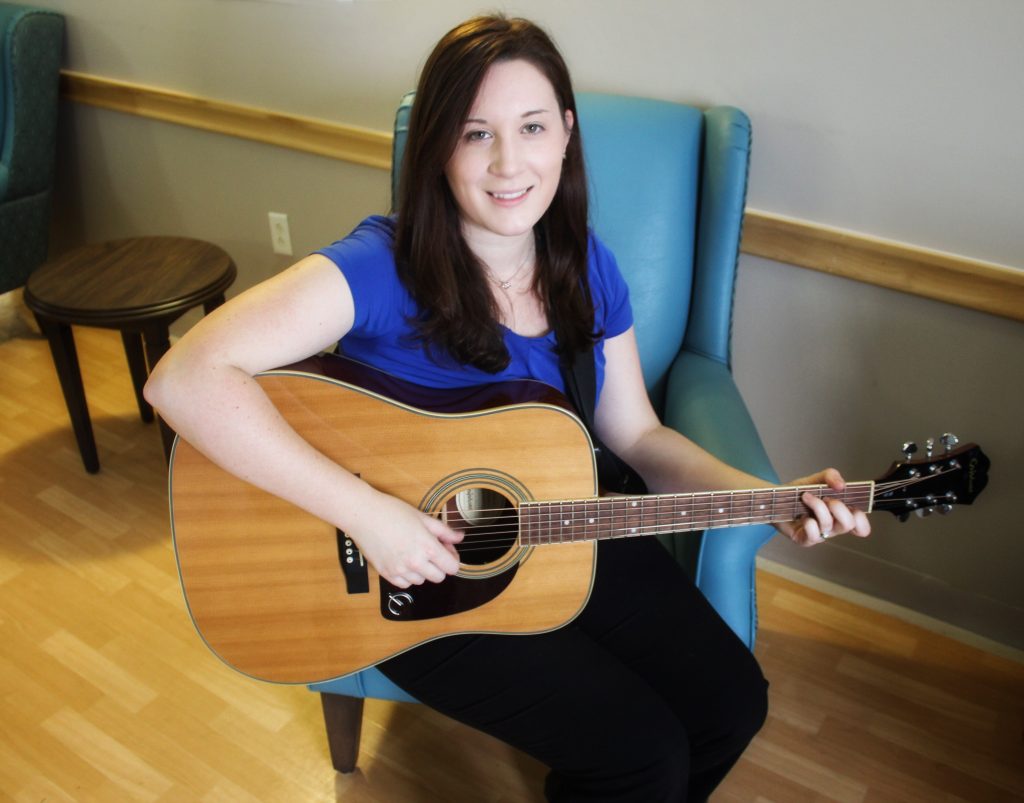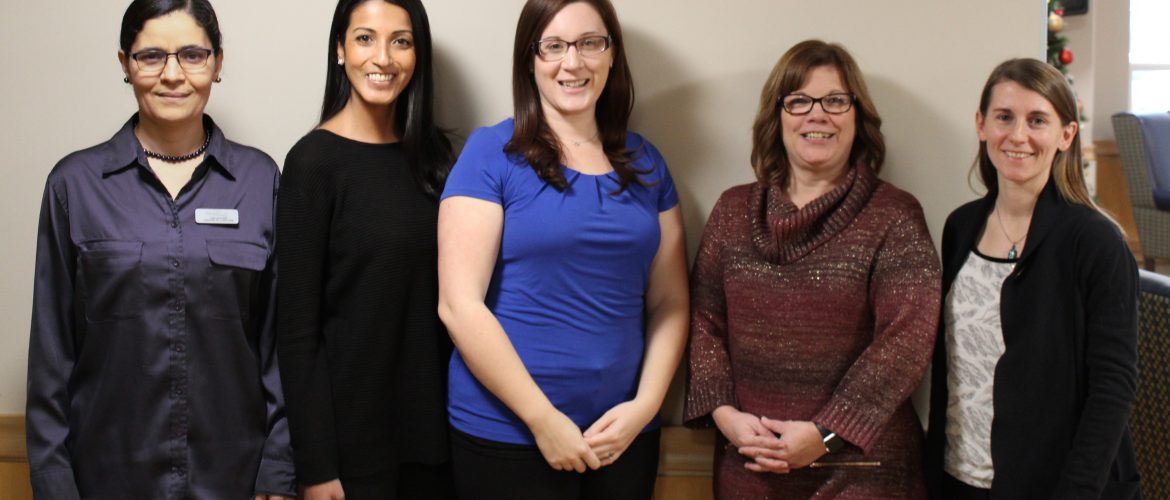
Sarah Condran, music therapist at Arborstone Enhanced Care (Shannex)
Meet Sarah Condran, music therapist at Arborstone Enhanced Care (Shannex) in Halifax, Nova Scotia. As a front-line clinician working with sound every day, she sees firsthand that noise can affect the mental health of older adults, especially those with dementia.
Building on an initial sound audit pilot at Arborstone in 2017, Sarah is spearheading a CABHI-supported project to enhance sound environments in long-term care at her facility and beyond. Sarah joined us for a Q&A about her project.
What is considered ‘noise,’ and how does noise impact those living in long-term care settings?
Noise, by definition, refers to sound that intrudes on your ability to create internal thought, more than one sound heard together, or sounds that are especially loud and bracing. In long-term care, these sources of noise can include everyday things such as laundry carts, staff conversations, elevators, dishes, and the like.
When our bodies are subject to loud or abrupt sounds, our body briefly enters “flight or fight” and enters into a state of stress. Residents with cognitive impairments such as dementia may not be able to recognize that the door that just slammed is not a threat, so they may stay in that state longer. Stress, as we know, has many adverse effects on the body—so noise can have significant adverse effects on our bodies’ ability to heal and generally be well.
And for those who already have cognitive impairments, once their attention is interrupted, it is difficult to get back. This can prevent nursing staff from completing seemingly simple procedures, create agitation, and reduce residents’ ability to effectively engage in leisure activities and therapeutic sessions.
When environmental triggers such as noise are regulated, there is an incredible value to cognitive clarity. Our perception of pain is decreased, we are more tolerant, and we are more focused on specific tasks. Many sounds are a part of our natural working environment, but how can we mitigate that?
What does your CABHI-supported project aim to achieve?
Through our CABHI project, we hope to enhance the sound environments in long-term care communities and create realistic guidelines and suggestions that other facilities will be able to follow. We will build on an initial sound audit pilot project that was conducted throughout 2017 to assess noise levels in our facility, as well as make physical changes to the living spaces and provide additional training to increase awareness of mental health and the impact that environmental stressors can have.
What are some examples of practical changes that could be made as a result of the project?
Changes to physical environment, such as creating quiet spaces for therapy, recreation, family visits and quiet leisure to occur, as well as repairing and replacing regularly used equipment as necessary.
Offer and enhance our mental health education for staff that is specific to seniors, to advocate the rationale behind reducing these environmental stressors.
Changes in practice as needed—for example, how can we enhance our residents’ ability to communicate with staff and each other during meal times?
Enhance leisure spaces and resource, by renovating recreation spaces so they are welcoming, or providing engaging leisure resources interesting for residents as well as families, volunteers, and staff.
Your project also aims to validate the need to create provincial policy and standards of noise in long-term care. What impact could this have on a wide-scale level?
We were unable to find a standard of practice or provincial policy in regard to noise environment in our research. We would like to see the “normalcy” of noise challenged. Our goal is to validate the need to create policy and standards at the provincial level for long-term care homes in Nova Scotia and to advocate the purpose of creating an ideal sound environment for residents living in long-term care. Based on the findings of our project, our administration is prepared to draft proposals to the Nova Scotia Department of Health advocating for regulations put in place during licensure visits for long-term care facilities and recommendations that they can use as a consultation when advising on new buildings. Many of the effects of noise can potentially be regulated based on how the facility is initially designed.
What’s your experience been as a frontline worker involved with a project like this?
Because the team knows I am working on this project, they are coming to me with examples of how noise has affected either a resident or themselves. I am seeing that noise also can cause stress for staff. Being a part of the clinical team and having the experience on the floor means I am able to bring a different but important point of view to a project like this.
How has your experience been working with CABHI?
Shannex encourages innovative solutions to everyday problems through their Quality Improvement Plans that each corporate department and site is responsible for. We feel that this initiative will help us to further support the efforts made by our frontline staff in creating lasting solutions for the benefit of our residents. We are thankful to have funding from CABHI to help support our site-driven initiative.
Photo above: Azza Mohamed, Adrienne Butler, Sarah Condran, Elizabeth Shaw, Melissa Jenkins, all staff at Arborstone


